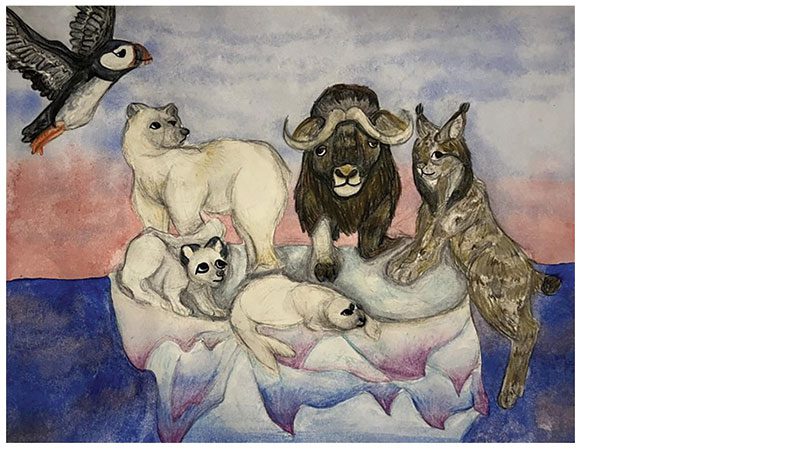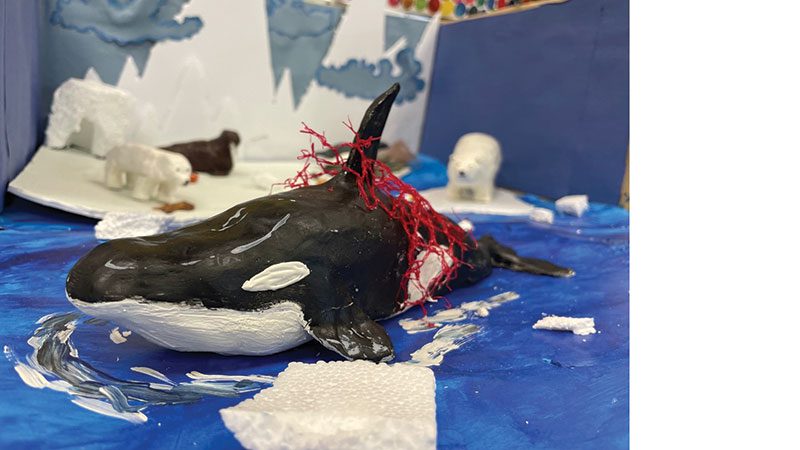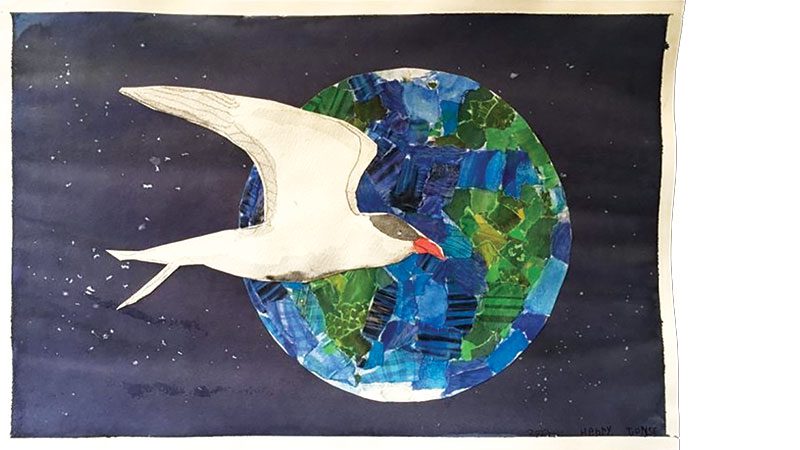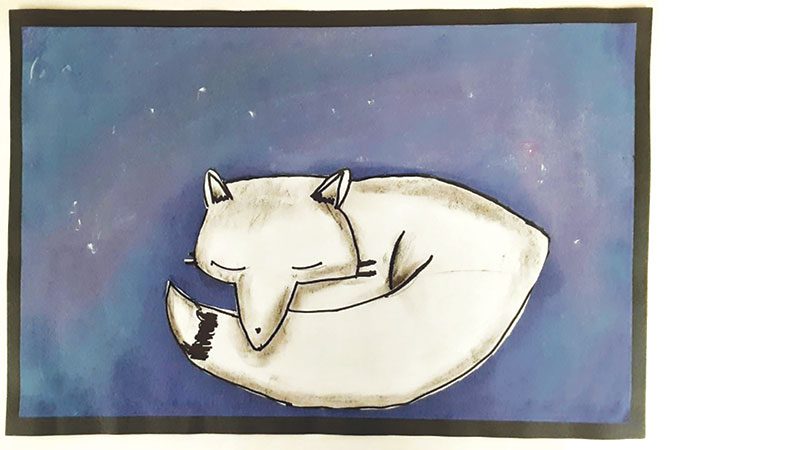Students hope Arctic art—and a museum exhibit—helps the planet
This article was originally published in September 2022

A local teacher’s trip to the Arctic Circle has led to global inspiration on conservation—and art.
When Jennie Warmouth went on an Arctic expedition in 2019 as a Grosvenor Teacher Fellow with the National Geographic Society and Lindblad Expeditions, her students at Spruce Elementary School in Lynnwood followed her travels and learned about the region’s spectacular ecosystem and the impacts it faced from pollution. Inspired to get involved, the students switched from disposable to reusable silverware in their lunchroom as the first move. The next year Warmouth led a student arctic-inspired art contest focused on conservation. This year the project expanded and became a part of history on its own, as The Ar(c)t(ic) Design Exhibition, a virtual art exhibit at the National Nordic Museum in Seattle.
Warmouth’s second-grade class judged more than 100 entries from students aged 5-18 from around the country, with the help of a panel of National Geographic fellows and artists. (The grand prize was a night at Great Wolf Lodge.)
As Warmouth (now a 2022-23 National Geographic Explorer) wrote, the students were aware of the serious stakes and the rewards.
“There has never been a more important time to teach our children about the intricately interconnected systems of the planet that we are living together on. These early conversations, explorations and creative expressions will lay the groundwork that they will need to actively engage with scientific issues that will affect them throughout their lives…” she said. “The beauty of this project is that children are encouraged to gain knowledge about and imagine solutions for an aspect of the Arctic ecosystem that resonates with them and their families.”
The Nordic museum began working with local students during the COVID-19 pandemic to create exhibits that complemented its holdings, though it started with high school students, said Leslie Anne Anderson, the museum’s director of collections, exhibitions and programs. The Arctic art project had a geographic link to the museum’s focus, of course. But it also connected with the museum’s core values, one of which is a connection to nature and sustainability, she said.
“The museum really wants to support and encourage artists of all ages, focusing on issues that are critical to us all.”
Mike Libecki, a judge and a National Geographic Adventurer of the Year, said in a statement that the project is the sort of global teamwork, “through the power of art and communication,” needed to change the world.
In a new approach, the second graders and teacher curated the online collection, including a message for visitors.
The introduction from the second-graders: “We hope that people will slow down and take responsibility because each and every decision counts for our planet. We want people to notice their impact on Earth. Some animals are endangered and at risk of becoming extinct…because of OUR choices! You might just think that one little piece of trash is meaningless but it all matters! With this collection, we intend to show civilization the importance of healing and protecting the Arctic ecosystem. We envision a balanced and thriving world in the future.”
Click here to see the online exhibit.




